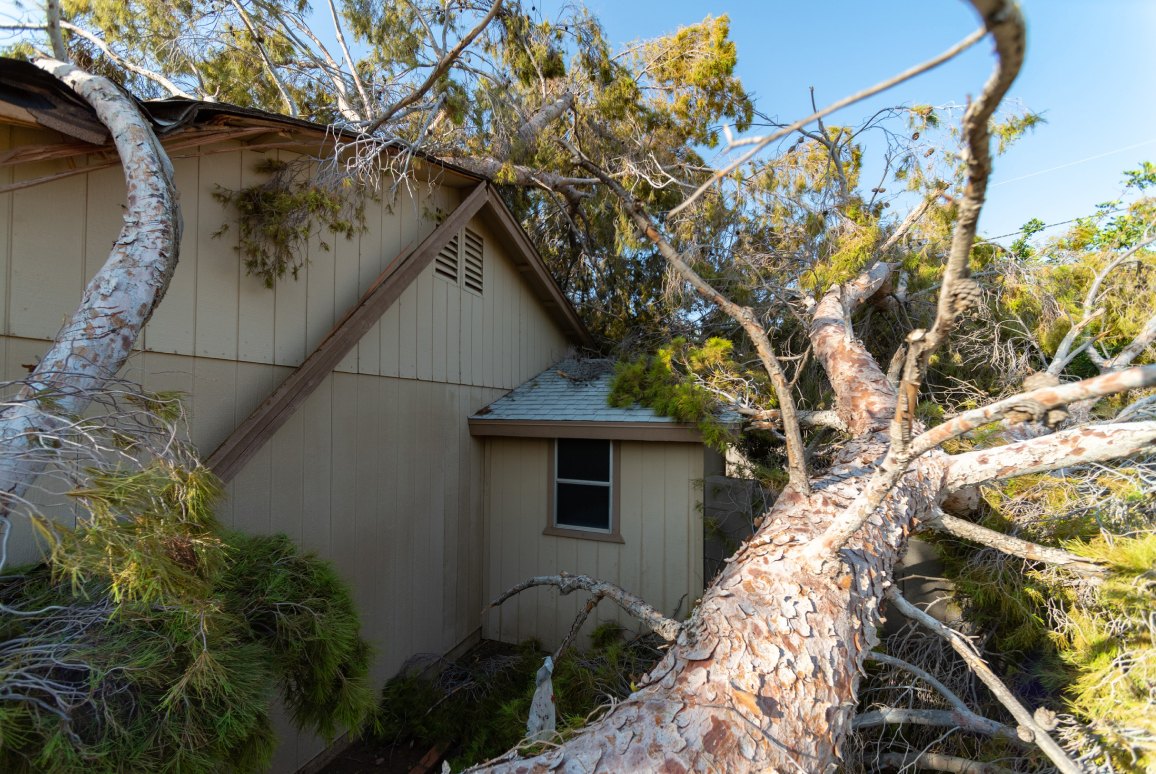Having a tree fall on your house is a nightmare scenario for any homeowner. Whether it’s due to a storm, old age, or an unexpected natural event, the damage can be significant and overwhelming. However, staying calm and knowing the right steps to take can help you navigate this stressful situation with confidence.
A Comprehensive Guide on What to do When a Tree Falls on Your House
1) Ensure Safety First
The most important priority is your safety. If the tree has fallen on your house, there may be immediate dangers, such as electrical hazards, gas leaks, or structural damage that could worsen.
- Evacuate the Home: If you’re inside when the tree falls, leave the house immediately. If you’re outside and notice a tree has fallen, stay clear of the house, as there could be more falling debris or the tree might shift further.
- Call Emergency Services: If you’re in a potentially dangerous situation, such as a gas leak, fire, or severe structural damage, call 911 for help.
2) Assess the Damage (But Stay Safe)
Once you’ve ensured everyone’s safety and have left the house (if necessary), it’s time to assess the damage. Do not go inside the house until it’s been inspected for structural safety.
- Look for Major Damage: Check if the tree has caused visible damage to your roof, walls, windows, or foundation. However, don’t try to move any debris or assess areas where there could be hidden hazards.
- Check for Leaks: If water or gas leaks are visible, turn off the main supply (water and gas) immediately, if possible.
3) Call Your Insurance Provider
Contact your homeowner’s insurance company as soon as you can. The sooner you notify them of the incident, the sooner you can begin the claims process.
- Document the Damage: Take photos of the damage before any repairs or cleanup. These pictures will be useful for your claim.
- Review Your Policy: Understand your coverage, especially when it comes to damage from fallen trees. Some policies may cover the cost of removing the tree, repairs, and temporary living arrangements, while others may not.
4) Contact a Tree Removal Service
Removing a fallen tree is a job for professionals. Never attempt to remove the tree yourself, especially if it’s large or if it’s resting on power lines.
- Get Multiple Quotes: Contact a reputable tree removal company to get quotes for tree removal and debris cleanup. Some tree services may also offer emergency tarp covering for damaged roofs to protect from further rain or weather damage.
- Tree Removal with Caution: If the tree is near power lines or involves dangerous angles, make sure the company you hire has the proper equipment and certifications to do the job safely.
5) Temporary Repairs
Once the tree has been removed, the next step is to make temporary repairs to prevent further damage.
- Tarping the Roof: If the tree has made a hole in the roof, consider placing a tarp over the area to prevent water from entering the home. Your insurance company may be able to help with this process, or the tree removal company may also offer this service.
- Shut Off Power: If you suspect that any electrical wires or systems have been damaged, turn off the power to your home to avoid further risks. Check with an electrician if you’re unsure about the condition of your system.
6) Start Permanent Repairs
Once the immediate dangers have been addressed, it’s time to plan for permanent repairs to your home. This could include roof repairs, structural work, and replacing any broken windows or damaged parts of your home.
- Hire a Contractor: Reach out to a licensed contractor for an assessment of the damage and an estimate of repair costs. They can help restore your home and ensure everything is structurally sound.
- Be Prepared for the Cost: Depending on the severity of the damage, the costs can be significant. That’s why it’s essential to work closely with your insurance adjuster and contractor to get the most accurate estimates.
7) Prevent Future Incidents
Once the situation is under control and repairs are underway, it’s wise to take steps to prevent this from happening again in the future.
- Regular Tree Inspections: Have a professional arborist regularly inspect the trees on your property, especially large or old trees that may pose a risk. Pruning and removing dead or diseased branches can help prevent accidents.
- Consider Tree Removal: If you have trees that pose a direct risk to your home or structures (such as trees that lean toward your house), you may want to consider removing them proactively.
Accidents Happen
A tree falling on your house can be a traumatic experience, but staying calm and following these steps can make the situation more manageable. By focusing on safety first, contacting your insurance provider, and taking the right steps to remove the tree and repair the damage, you’ll be well on your way to restoring your home.
Most importantly, remember that accidents happen, and although dealing with damage can be stressful, you don’t have to face it alone. Work with professionals, insurance agents, and contractors to help you recover quickly.
Stay safe and take care of your home!


